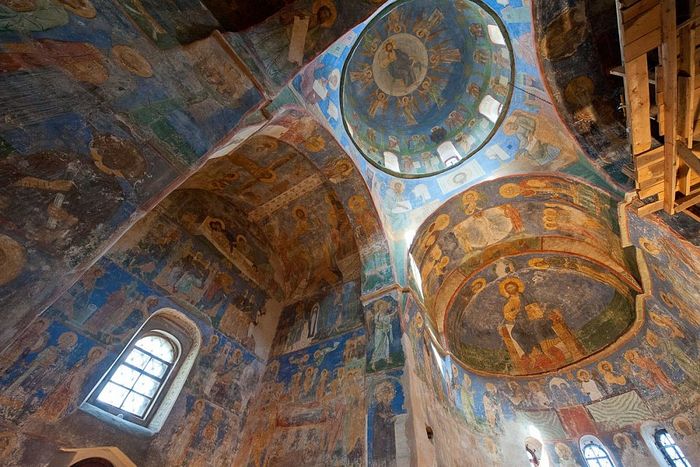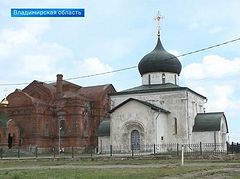Pskov, January 17, 2020
Restoration work on the frescoes of the Holy Transfiguration Cathedral of the Mirozhsky Monastery in Pskov is set to resume this year.
The cathedral is the oldest preserved building in Pskov and the surrounding area, and is the only church in Russia with well-preserved pre-Mongolian iconography. The last restoration work took place at the end of 2017, reports the Synodal Department for Monasteries and Monasticism of the Russian Orthodox Church.
The cathedral was included in the UNESCO World Heritage List last summer, together with a number of other ancient Pskov churches representing the unique Pskov school of architecture.
The cathedral is a Byzantine-style church where 800 years ago Greek masters worked on the frescoes that have survived until today. They were initially whitewashed in the 17th century, but fragments of the frescoes were rediscovered under collapsed sections of whitewash during repairs to the cathedral in 1856.
A strict climate regime is maintained in the church, and the church is closed when there is wet weather.
“We expect that the Ministry of Culture of the Russian Federation will allocate funds for the restoration of frescoes this year. The [Pskov-Izborsk] Museum has applied for the ‘development of culture and tourism’ state program. We expect that the dome will be restored and the central part [of the church] will be opened this summer,” explained Irina Melnikova, senior research for the Department of Storage of Monuments of the Pskov-Izborsk Museum.
According to Melnikova, the restoration of iconography in the dome of the church will fully open the ensemble of frescoes to visitors and tourists.
In the summer of 2018, the Russian government announced that it was undertaking measures to protect the Mirozhsky Monastery and the Snetogorsky Monastery, also in Pskov, from flooding.




